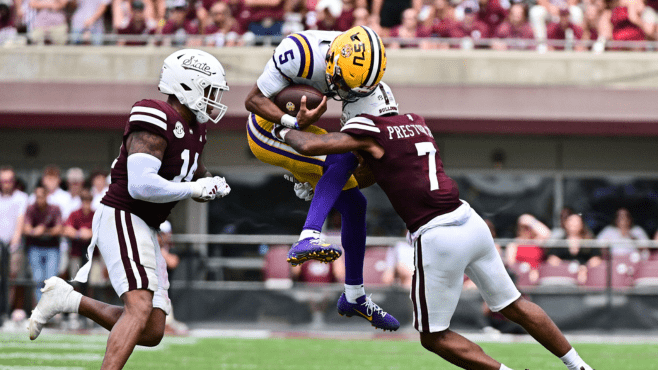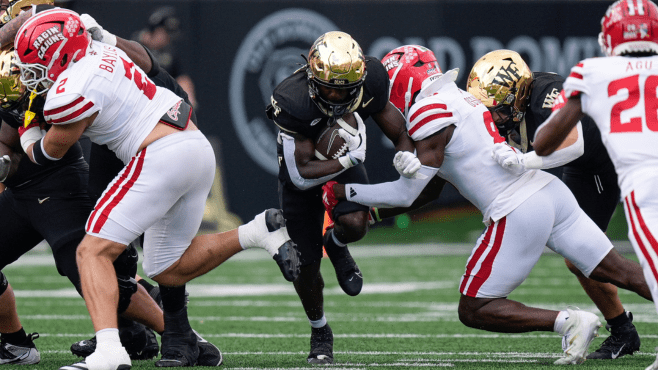
“Personal foul. Targeting. 15-yard penalty and the offending player has been disqualified.”
This is a phrase that college football fans have likely gotten used to hearing while watching their favorite team play.
“Targeting” is a rule that aims to prevent any hit that goes “beyond making a legal tackle or a legal block or playing the ball.” This is via the 2024 NCAA rule book.
The “crown” or top of the helmet is a big point of emphasis in the rule. It also gives extra protection to “defenseless” players, such as a receiver trying to catch the football. That extra protection is necessary, as those players are not in the same position to protect themselves like a ball-carrier would.
The rule dates back to 2008, but as Keith Jenkins of ESPN.com pointed out, it changed in 2013 when the foul became an automatic ejection.
Ironically enough, I was at the game where the first ever player was ejected for targeting. Tulane was hosting Jackson State inside the Superdome in 2013. Lorenzo Doss, a defensive back for the Green Wave, was flagged and tossed for a hit on the quarterback.
I remember the conversations that were had immediately after the fact. Many thought the rule was unfair, unnecessary, and was going to mess up the way defensive players played the game. There were also fears that the game would lose its physicality.
I was certainly apart of those conversations and agreed with the sentiment at the time as well. However, 11 years later, I have some different thoughts on the rule.
This part may surprise some of you, but I actually LIKE the targeting rule. And here is the part that I can’t believe I’m admitting: I think the decision to change the rule to an ejection in 2013 was a GOOD decision. What happened is players had to fundamentally change their approach. Coaches had to reconsider their teaching techniques. As a result, I believe that we did make a dangerous game safer.
So why, then, am I writing this dissertation?
I’m so glad you asked.
That is because along the way, we lost our intended purpose. We kept the consequences the same without adjusting to the new normal that the original rule created.
To illustrate this point, let’s take a look at a recent game between the Louisiana Ragin’ Cajuns and the Wake Forest Demon Deacons.

In this game, the Cajuns had not one, not two, not three, but four players disqualified for targeting. A couple of these calls were certainly questionable, but even after review were upheld or in some cases added to the play. Two of the Cajuns’ best defensive players were among those disqualified and missed the entire second half. Two more players were ejected in the second half, meaning they had to miss the first half of the team’s next game. Louisiana found a way to win the game, but they had to do so without four members of their defense, all disqualified for something what was perhaps a penalty, but none of which seemed to be malicious or egregious in intent.
The point I am trying to make is not that targeting should not exist. I think it is still important to put player safety at the forefront, and this rule does that. Additionally, as I’ve suggested, the initial penalty of an ejection got the message across and changed the way the game is played.
However, I think we have gotten to the point 10 years later where an ejection is excess. Because of how many different aspects there are to the rule, it seems to me that sometimes players are being called for it despite no intent to violate the rule. While intent is not always necessary to call a flag, I do think intent should be considered when taking a player off of the field.
Is it really fair for a player to lose a chance to play in a big game because of incidental contact in a game that is deemed to be targeting?
THE SOLUTION
I would not have written this without at least bringing to the table something that I think can be a fix to the issue.
In order to try to resolve this, I went to the sport of basketball for inspiration.
Basketball is a sport that has a level of physicality involved as well, and as a result has had to put into practice some extra rules that penalize excess force or aggression. The flagrant foul is designed to prevent unnecessary force and gives two free throws and the ball to the offended team. In addition, there are two classes of flagrant fouls, and that is where I think we find our answer.
A flagrant foul where excessive force is used is described as either a flagrant one or flagrant two foul. A flagrant one issues two free throws and the ball to the offended team, but the offending player is still allowed to remain in the game unless he receives a second flagrant foul in the game.
A flagrant two foul is called for more obvious acts that are completely over the top. In that case, the player is immediately ejected.
I think college football should adopt this model for targeting fouls. Often times, such as in the aforementioned game between Louisiana and Wake Forest, targeting is the correct call. However, it happens seemingly without malicious intent and can be accidental.
The penalty should still be called, and the yardage enforced. However, the player should only be ejected if they went over the top in an obviously malicious act.
Should a player get a second targeting foul in the same game, then they should be disqualified. However, this gives players the opportunity to stay in the game, much like a basketball player who commits a flagrant class one foul.
I would also be in support of a running tally where after a certain number of targeting fouls in a single season, a player is suspended for a game. However, they should not be suspended a game for each targeting penalty, the way they are right now.
Overall, I do think targeting has improved college football. The game is safer, and players are learning safer more effective ways to tackle. However, it is time we modernize the ramifications of the rule and allow these players to continue participating in some of the biggest competitive events that they train and prepare so hard for.
Dawson Eiserloh is the host of “The LohDown with D-Loh” which is broadcast weekdays (1-3 PM) on ESPN 103.7 Lafayette and 104.1 Lake Charles — Southwest Louisiana’s Sports Station

